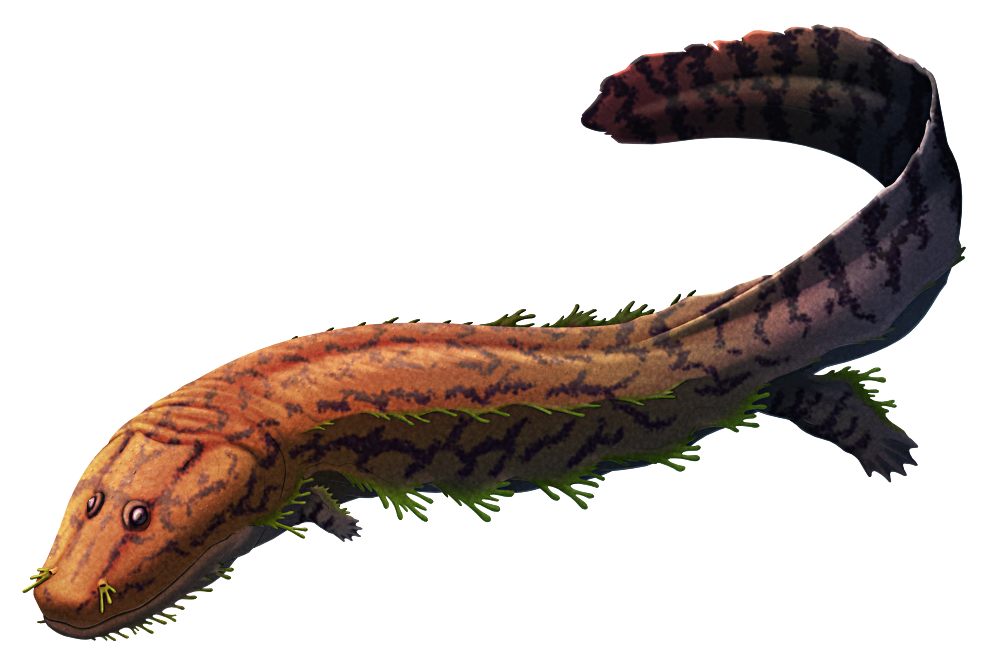Crassigyrinus scoticus was an early tetrapod from the early Carboniferous Period, known from ancient coal swamps of Scotland, Nova Scotia, and West Virginia between about 350 and 330 million years ago.
Around 2m long (6’6″), it had an elongated streamlined body with tiny vestigial-looking forelimbs, and a pelvis that wasn’t well-connected to its spine – features that suggest it had re-evolved a fully aquatic lifestyle at a time when its other early tetrapod relatives were specializing more and more for life on land.
Fossils of its skull are all rather crushed, and traditionally its head shape has been reconstructed as unusually tall and narrow. But a more recent study using CT scanning has instead come up with a wider flatter shape more in line with other early tetrapods.
Its mouth also had a very wide gape and a strong bite, and it may have occupied an ecological role similar to that of modern crocodilians, lurking in wait to ambush passing prey.


i just recently found this post and so far im absolutely loving it. this new design is really cool and so far one of my favorites of the more recent ones. also i am really enjoying reading through the spectember section and i think you should do it again. speculative evolution is really cool.